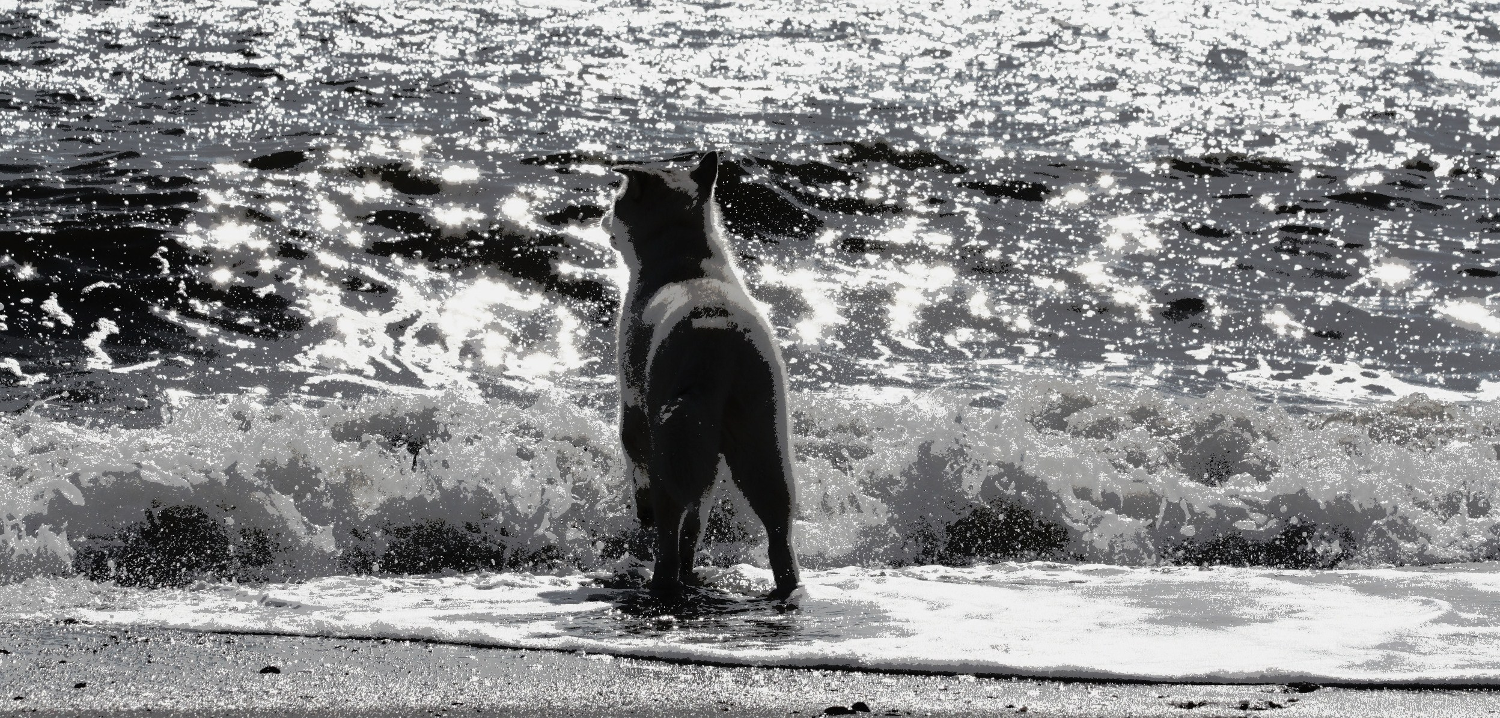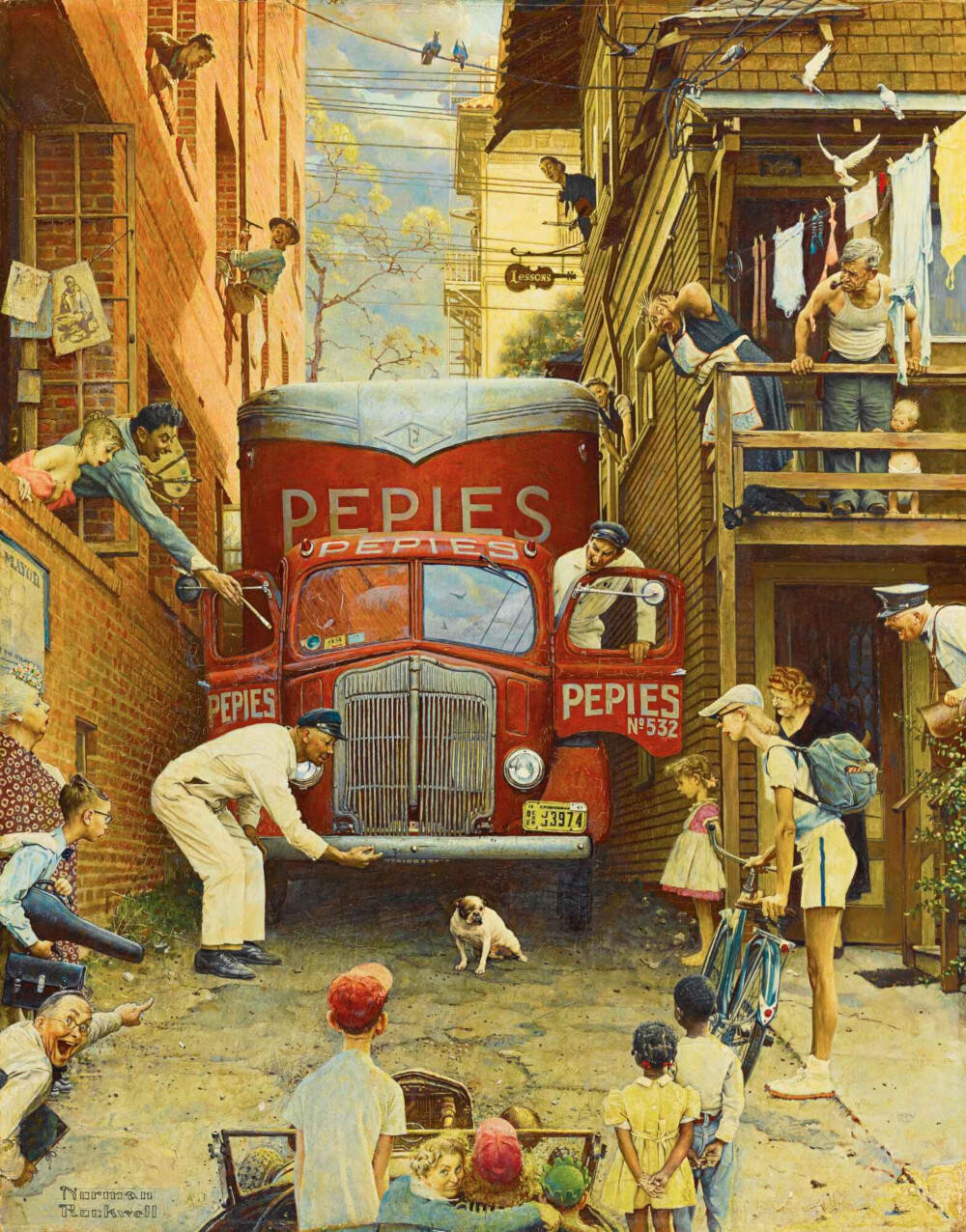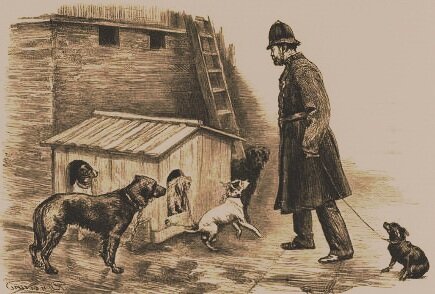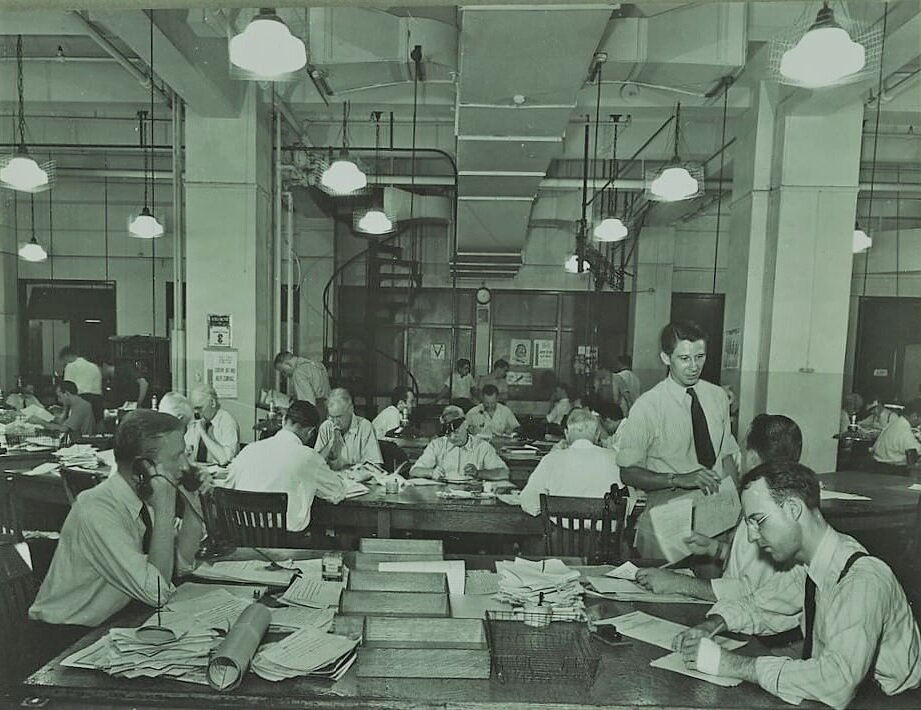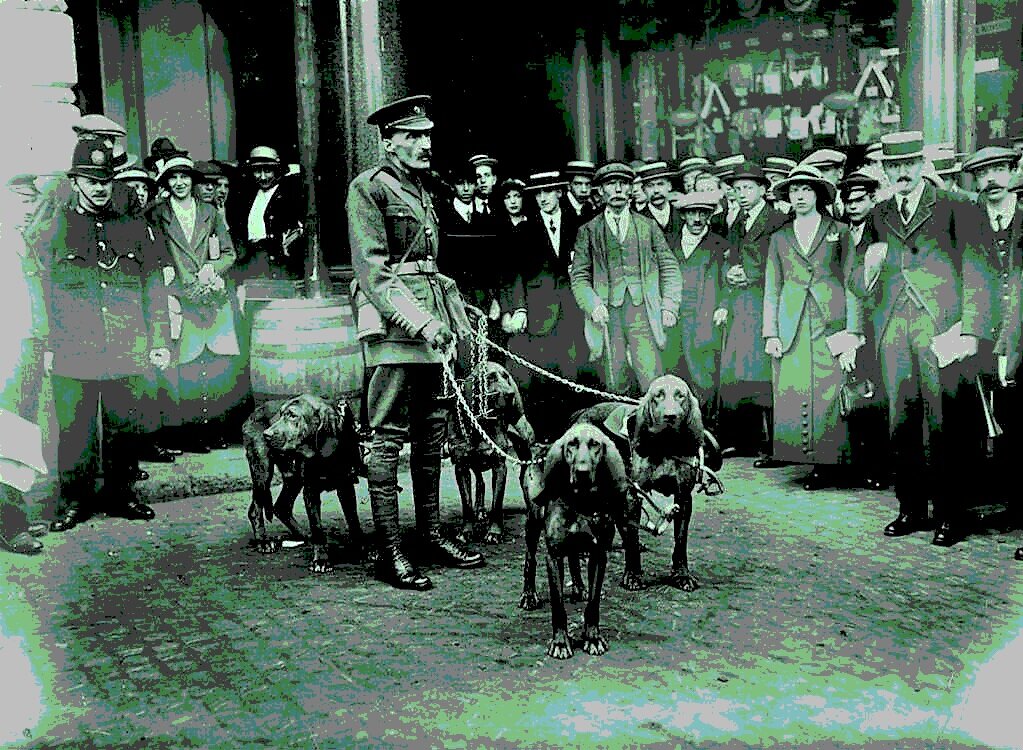Anxiety… Fear…
Guilt…
If you are experiencing the dog guardian’s worst nightmare, you must not panic: there are many steps you can take to locate him, and a calm and thorough approach will become a critical asset. Swift action, coupled with aggressive neighborhood networking, will increase the odds of having your companion return home safely.
The key is to
calmly and methodically
get the information out
to as many people
and posted in as many places as you can,
and to enlist the aid
of family and friends in a coordinated search effort.
(Continued) PAGE 2:
YOUR DOG IS ALREADY LOST— now, for a calm and reasoned action plan.
Hide and seek?
If you’ve searched your home carefully—under beds, in closets, dark places, small places, behind bulky furniture (shaking a food dish, treat jar or favorite toy will sometimes lure pets out of a hiding place)—and have determined that your dog is not hiding or sleeping somewhere, time is of the essence. Small dogs notoriously squeeze themselves into some surprisingly odd places, so search your property thoroughly. Take a slow ride or walk around the neighborhood, gradually widening your circle, asking neighbors if they’ve noticed him (bringing along your photo to show them). Check under porches and shrubs, and ask neighbors to check in sheds and garages just in case your dog was accidentally locked in. Have a friend or family member wait outside your home in case your dog returns to your doorstep or complex.
Resisting panic is critical: stress will decrease your chances of acting rationally and even of spotting your dog if he is close by.
Put all prior commitments on hold.
Your everyday tasks just aren’t as comparatively important as your animal’s life.
Take time off work. Do whatever it takes to make time to search for your friend.
First...
Ask what kind of dog
is missing?
According to experts, lost dogs typically fall into three categories (regarding how they relate to strangers):
• 1) HIGHLY EXTROVERTED
“wiggle bottoms,” confident, secure dogs who cheerfully go to the first person they see;
• 2) ALOOF DOGS
who have never been comfortable with strangers and would avoid them (until starving or weather stressed); and,
• 3) SITUATION-ALLY
INSECURE DOGS
(such as an adopted/rescued dog, that may have endured an abusive, injurious or under-socialized puppyhood): those who are afraid of new things.
This third group, are dogs who may be outgoing when they are comfortable (in familiar surroundings or with people they know), but freeze and panic in new situations: once fearful, they won’t come voluntarily to anyone (perhaps even dogs they know).
It is important to realize that even dogs who are well-socialized generally become disoriented and stressed when lost... and may not respond as you would expect. A normally friendly dog, under stress, may retreat from anyone who in fact may be attempting to help him (even familiar dogs).
Understanding and integrating this concept into your action plan may help you plan your search activities on a more intuitive level.
A dog of this third type, or, more especially the second, would likely be seeking a place to hide away from people. This dog is in survival mode, perhaps believes no one can be trusted, and may growl or snap if cornered. This dog may commonly end up in fields and parks that may look empty.
Searching for the Lost Dog.
If local Animal Control is still open, telephone them immediately—perhaps even before you go out to search for yourself. Inquire about their policy for identifying lost dogs (some require that you personally visit the shelter to search), and ask if they will take a description of your dog. Specify that you will guarantee to pay necessary veterinary expenses if your dog is found injured (because some agencies have a policy of euthanizing seriously injured animals). Ensure police have your phone number: they won't LOOK for your dog, they'll only pick him up if they see him, or are alerted to do so by another Town resident.
If you have changed ANY
contact information…
or have switched cell phone providers (with a new phone number): immediately contact the vendor for your dog’s microchip to update!
Never be embarrassed
for the means you choose to get his attention
Mobilize your family
and friends!
Have someone searching the immediate neighborhood on foot; others to search the roads or streets in a car. Bring your second dog or borrow a neighbor's that your dog knows… that dog can be a “second pair of eyes” and may notice yours or bring him out of hiding.
Use his favorite squeak toy. to get his attention. Consider “howling” like a dog, instead of simply calling: never be embarrassed for the means you choose to get his attention.
A high-pitched (ultrasonic) dog whistle can carry as far as a mile, and get his attention: wait... be quiet... and listen for your dog to “reply.”
Do not shout… control your anxiety or frustration, as your dog may think you are angry: instead, call his name as if you are calling him
for a meal or a game.
Stop frequently to ask people if they have seen (your dog) and offer a single key detail (such as his fluorescent yellow collar). If the search is still fruitless by dusk, go home and prepare for the next step in your process. Before you retire, put some food & water outside your house and even your dog's bed or some of your clothing with familiar smells. Consider placing the bowls in a humane trap that will hold your pet until you can recover her.
• Ask children—who are often more casually observing than adults—if they’ve seen your dog. While you're out, talk to neighbors and passersby and let them know you are desperate to find your dog.
• Remember a flashlight—it focuses your attention, naturally—to search small places where he might hide: inside drains or sheds or under porches or parked cars. The light may also “illuminate” his eyes, if he is sitting quietly. In fact, a far-reaching “headlamp” may be easier and more productive as a search tool.
• Go outside at night when it’s quiet, and call your dog’s name… listen carefully for the faint whimper that he might be stuck somewhere: and especially so if he is leashed, as it might have gotten wound around an obstacle.
You should call every shelter and animal control facility within a 50 mile radius and report your loss:
If there are no shelters close to your home, contact the police. Not only can a scared or confused dog travel great distances in a short time, he may unwittingly “hitch a ride” through a variety of means, particularly in urban/sub-urban areas: don’t commit the mistake of limiting your search range.
Call animal shelters in adjoining counties, including private, no-kill shelters, and report your dog missing. Email or fax clear photos of your dog noting marks, scars, or particular means to differentiate him (see: How well do you know what your dog looks like... really?).
Be aware that some shelters hold onto a pet for a period of time and then transfer them to another shelter; or, the person who found your dog may wait several days before turning him into a shelter; or, your dog may have been found but turned into a shelter other than the one that services the area where he was initially lost. You need to consider all possibilities, plan carefully, and follow up accordingly.
Go in Person:
and Manage Your Expectations.
Call distant shelters periodically, but check local facilities at least every other day—in person—and ask to walk through the kennels. You should ask to see the dogs in medical, if the shelter has such, as well as in the general runs since your dog might have been injured or ill, and under treatment.
He may not now fit the description you give…
Realize that merely calling a shelter and expecting highly-pressured staff who are invariably overwhelmed caring for a constantly changing roster of animals to recognize your own... is simply not realistic.
Shifts change, new arrivals may be kept in a “holding kennel,” and not every worker may be aware of recent additions. Beset with daily challenges, staff may mistakenly identify less common breeds. Conversely, you may have been told that your dog is a mix of some kind, but it doesn’t look like that mix and a shelter worker may designate him as
something else.
He may not now fit the description you give, especially if he is dirty, stressed, or injured.
Think carefully, about a key specific detail that you can offer to identify him if that happens.
Follow up: never depend on a shelter to call you.
Then... Dig Deeper.
Broaden your search beyond shelters, however. The person who found your dog may have feared that he would be euthanized if turned into a shelter, and took him to a rescue group instead. Do a web search for rescue groups in your area by entering: “lost dog in (your town & state).” Be creative: there are often rescue or membership groups that use social media-based posts focused on geographical areas or specific breeds that can list your dog. Your local shelter may be aware and can offer you information.
Police departments today often have social media pages and may post lost dog information for you.
What are the
rescue groups
in your county?
Think about what things your dog is attracted to? What places in the area you are walking does your dog enjoy spending time at, and, can he find them from where you last were? If you don’t find him there, leave a familiar toy or something with your scent in the area for them to find, and check back frequently.
A Strong light helps you to naturally “focus”
Leave a trail for your dog to follow. Put out live traps with food and un-laundered clothing that smells like you, then check them regularly; refresh them with “dirty” clothes when necessary. This is especially useful in rural areas and for dogs who become shy once they are lost (see above).
Be flexible in your prediction of how your dog will behave once he is lost (whether he is on a personal "adventure" or unintentionally separated) since he may undergo a dramatic "about face"… and do not expect your dog to bark when you are nearby.
Consider the context under which your dog barks: perhaps he barks at strangers, when cars drive up or when other dogs bark... (an “ALERT!” bark), but not for attention, for food, or when playing.
He may not vocalize when you walk past searching even though he hears you; also remember that some dogs if injured or frightened will “go to ground” and remain silent.
When searching at night, a strong flashlight will be your ally, since it naturally forces you to “focus,” helps you notice movement, and may reflect your dogs eyes if he does not bark back to you. He may be “pinned” by a tangled leash and closer than you realize, so pause often and listen carefully since he may not be able
to come to you.
Work slowly and methodically…
Give your dog a chance
to find you!
Realize that driving by at 20mph (or more!), your dog won’t be able to keep up, even if you do pass and get her attention.
Dogs generally know their own family’s car distinct from all others…
If possible, leave a vehicle open at the exact spot
where your dog
disappeared…
Put some food and water
on the floor inside,
leaving clothing
with your scent on it.
Have people stay away from it except for quick checks to see if the dog is…
curled up sleeping…
Make a Reward Poster.
A photo should fill at least a third of the sheet, with large letters: “REWARD!” An offer of a reward attracts more attention (particularly of children) than a simple notice of another lost dog; the reward itself doesn't have to be large to be effective. Below that, print a simple description of the dog itself: describe your dog as “very large,” “long-haired,” “curly” or “white” (etc.) and add descriptions of color only if they are visible from a distance.
Simple terms are better: Few people know how to estimate weight,
and fewer yet,
how to
measure height…
These simple terms are better since few people know how to estimate weight, and fewer yet, how to measure height. Note his sex and age. Helpful to get attention: asking to “check your backyards,” mentioning if he has a medical condition which necessitates treatment, as well as a note that “he is cold and hungry.” Mention the neighborhood or district he is missing from—but not your address—which tends to limit the mental conception people form about where to look. Add your home phone number, a number of a friend who is home during the day, and that of your local rescue representative if they will agree.
Sample online template with fill-in fields: click here.
Head for your nearest copy center, where the equipment will be more advanced. Paper slightly heavier than standard "20 lb copy bond" will be worth the extra money. Start with at least 500 copies: you will need them—but better to ask for a quantity discount, and don’t be surprised if you end up using 2000 copies.
It will be worth paying for the copies to be laminated, otherwise, they won’t stand up to weather, and may perhaps be unreadable in a short time. Or, buy a home lamination machine, and seal the posters in plastic, yourself. When you put them up, ensure you don’t staple through the paper, so that it will remain waterproof.
Take copies to local pet stores, post on community bulletin boards, and at all the local veterinary offices.
Use a QR Code:
You can quickly direct anyone who sees your poster to a webpage where you might post more pictures or information than would fit on the poster itself by using a QR code. These are the boxes (black squares arranged in a square grid on a white background) that appear in many advertisements and on product cartons that can be scanned by a smartphone camera.
A Quick Response code) is the trademark for a type of matrix barcode (or two-dimensional barcode: a machine-readable optical label that contains information about the item to which it is attached) that was originally designed in the mid-1990s for the Japanese automotive industry. Once scanned, the horizontal and vertical patterns of a QR Code are then processed Reed–Solomon error correction until the image can be appropriately interpreted. In this way, anyone with an application can just scan your poster and go to your website or social media page. There are fee-based QR Code creators online, or, many “free” sites that will create a custom code for you that will carry an advertisement. Even with that limitation, it’s wise
to think about adding one.
Change
Your outgoing voicemail
Message…
It’s important that the number you are posting be answered. If your plan allows, have your home phone call-forwarded to your cell phone.
Change the message on your answering machine (or outgoing voicemail message) to assure callers that this is the number to call if they found your dog, and ask that the caller repeat his/her number so that you can confirm it: “If I don’t call you back, it means that I couldn’t hear your number clearly, so please try me again. Thank you!” Repeat the offer of a reward.
If you are scheduled to work the next day, plan to call in sick…respond immediately to any phone calls regarding sightings: some people may call and say they saw your dog “2 hours ago”: though he may have moved on, check that area anyway, as an indication to where he might now be.
Don’t skimp on the reward…
…this is not a time for economizing.
Spread the word…
grocery stores, community centers,
vet offices,
animal shelters, mailbox clusters…
anywhere
the flier has a chance to be noticed by lots of people in your neighborhood or community.
Make a Mailing List. Use the “Yellow Pages” to identify and send a copy of your poster to every veterinarian, animal feed and pet supply store, boarding kennel, dog groomer, and to every animal-control and law enforcement agency in your county.
If you live in a small county (that may not have animal control facilities)—or conversely, near the border of another county or a freeway—plan on increasing your search to include nearby counties: (go to the reference section of your library for those county directories, or use a web-based search engine). Use hand-written Post-Its to add: “Thank you for posting this notice” with your signature. Fold the poster in thirds, staple or tape the bottom, then stamp and address the outside. Once you have mailed a copy to everyone on your list, it's time to “paper the neighborhood.”
Stuff the mailboxes within at least a 12 block radius. Check the white pages (or municipal websites) for the locations of schools, parks and playgrounds within five to ten miles: children are sensitive to the plight of a lost animal and also often the first to notice a new or stray dog in their neighborhood; they will be attracted by the word “REWARD.” Staple your notices to bulletin boards, on fences or on utility poles where children are likely to notice (be aware if the prohibition against posting on utility poles is enforced in your area, or not).
Consider teenagers as key allies and approach them where they are: they will often sympathize (many may be active animal welfare advocates already), or have the extra incentive from the prospect of a reward; most importantly, they are always outside, where your dog is. Use the public-notice boards in most large supermarkets and shopping centers, and, if it is legal in your area, consider flyer-ing cars in the lot.
Call the neighborhood school and ask if you can tack a poster to the bulletin board (at kids eye level): sharp eyed youngsters are observant and likely to know if you dog is around or if someone local has found him and doesn't know his owner is searching. Paper dog runs and parks, pet supply stores and pet grooming shops, veterinary offices, commercial establishments such as grocery and convenience stores, gas stations, laundromats, bars, cafés and restaurants. Cover extra heavily the areas where you think your pet was lost, as well as busy commercial and pedestrian sections of your town. Go back a week later with a new flyer (with a phone number to call)… lots of people may throw the first one away, and a new version is likely to get a second look.
Talk to your mailman, garbage collectors, and local joggers. Give flyers to postal workers in the area, remembering that your town is divided into different sections, each with a postal worker. Try to reach all of them as they are working and ask them to help: they will have a good chance of spotting lost pets since they are always out driving the areas. Approach delivery persons, contractors, and town-employed laborers or grounds-keeping staff (who may note your dog in a park)—offer a copy of your poster.
sign-up with automated services
__________________________________
Among the online services that can help, Find Toto, The Center for Lost Pets, Lost Pet Research & Recovery, Fido Finder, Pet Amber Alert or 24PetWatch will send out mass alerts to scores of your nearby neighbors to notify them that your animal companion is missing. These vendors can pull the home phone numbers of everyone near the address you enter and send out automated calls or E-mail
in a matter of minutes.
__________________________________
Newspapers,
local radio & television.
Local breed-enthusiast or rescue groups. Many local cable and radio stations produce weekend pet-themed programs as a common-sense business decision: they are inexpensive to produce and often very popular. A “lost pet” segment may be part of the mix: telephone your local station, most will list your dog free. Place a “LOST DOG” ad in both your local and nearby metropolitan newspapers and run it for at least a week and a weekend. Remember to check the “found” section of the classifieds (keeping in mind that your dog may be described differently/inaccurately).
Consider social media networks that have a localized focus,
such as NextDoor.
Search for local dog enthusiast groups: Try your local library for information about regional community groups, explore local "pet themed" free newspapers distributed at pet food stores or veterinary offices for leads, (directory services such as “411” are now generally fee-based and therefore impractical). Call your breed Rescue Representative: they typically build memberships and walking/social clubs of dedicated breed enthusiasts (who often hear of “found” dogs or try to find homes for shelter animals), keeping a list of “lost” ones which they discuss through dedicated E-mail contact lists.
If your Town has a website, you can use it to find information about local social groups and citizen organizations, many of which may prove useful as contact points. Many mid-size Towns publish “Town Guides” (new resident books) as a social and commerce building function, in which dog-focused groups may appear.
Exploit social media resources
The Internet offers an ideal means to quickly and efficiently broaden your search. Send descriptive emails about your dog to your social networking friends, colleagues and family members: ask them to pass on the info to anyone they can, since your dog may end up a considerable distance away. Post messages to dog groups, animal interest forums and message boards run by groups based in your area: many parks and dog runs have evolved and active online communities.
Many local cable and radio stations produce weekend pet-themed programs as a common-sense business decision: they are inexpensive to produce and often very popular. One may feature a “lost pet” segment: telephone your local station, most will list your dog free. Place a “LOST DOG” ad in both your local and nearby metropolitan newspapers and run it for at least a week and a weekend. Remember to check the “found” section of the classifieds.
If you are convinced your dog is within a specific area, and it is financially feasible, your local US Postal Office can send a postcard about your dog to every home address in a town or city as “direct mail.”
pet tracking services
Consider hiring a reputable pet tracking service, who may employ animal communicators or K9 search teams that include certified scent tracking dogs that have experience on varied surfaces such as streets, fields, and buildings, that can work through day or night, rain, snow, sleet, wind and other weather limitations.
These are professionals and dogs certified pursuant to the Missing Animal Scent Dog Network (MASDN: a group of private investigators, dog trainers and K9 handlers working independently to locate and recover missing and lost pets). The group has institutionalized standards of practice, case structure and procedures as well as a code of ethics and certification standards for K9 handlers and their dogs. These teams first identify an area where your dog has traveled, and then advise you on specific actions to take to facilitate his recovery.
Just as you should be able to offer a “key” distinguishing characteristic that would immediately identify your dog to strangers—so should strangers be able to identify the the most prominent characteristic of your search process: relentlessness.
relentlessness!
The more people who know who your dog is and what he looks like, the more chances you will have of someone spotting him. You will be amazed at how much support you will get from the community: people will help look for your dog on their own, whether you are aware of it or not. There will be times when you feel like you are getting somewhere... and times when you'll feel like you are looking for a needle in a haystack: anything you do is a step in the right direction.
Never give up hope.
Lost dogs have been known to return home after months, after traveling thousands of miles, and found in shelters or by rescue organizations
many states away.
“When some proud son of man returns to earth,
Unknown by glory, but upheld by birth, The sculptor’s art exhausts the pomp of woe, And stories urns record that rests below. When all is done, upon the tomb is seen, Not what he was, but what he should have been...”
But the poor dog, in life the firmest friend, The first to welcome, foremost to defend,
Whose honest heart is still his master’s own, Who labors, fights, lives, breathes for him alone,
Unhonored falls, unnoticed all his worth, Denied in heaven the soul he held on earth — While man, vain insect! hopes to be forgiven, And claims himself a sole exclusive heaven.
Oh man! thou feeble tenant of an hour, Debased by slavery, or corrupt by power — Who knows thee well must quit thee with disgust, Degraded mass of animated dust! Thy love is lust, thy friendship all a cheat,
Thy smiles hypocrisy, thy words deceit! By nature vile, ennoble but by name,
Each kindred brute might bid thee blush for shame.
Ye, who perchance behold this simple urn, Pass on — it honors none you wish to mourn. To mark a friend’s remains these stones arise; I never knew but one — and here he lies.
—George Gordon Byron, 1808*
*(Introduced by John Cam Hobhouse, 1st Baron Broughton, and known as “Epitath to a Dog”): “Near this spot Are deposited the Remains Of one Who possessed Beauty Without Vanity, Strength without Insolence, Courage without Ferocity, And all the Virtues of Man Without his Vices”).
N.B.: This essay is written for informational purposes. We draw your attention to issues and (perhaps) some consumer products that are important to the subject at hand, but do not consider that our interpretation is necessarily complete. We would welcome your comments! We do not specifically endorse any of the products or services discussed here, but interpret that they may be of interest, and have provided links to stimulate creative thinking so that you may conduct your own research (links are in blue & will illuminate when you pass your mouse over them: click to be directed to a site).
